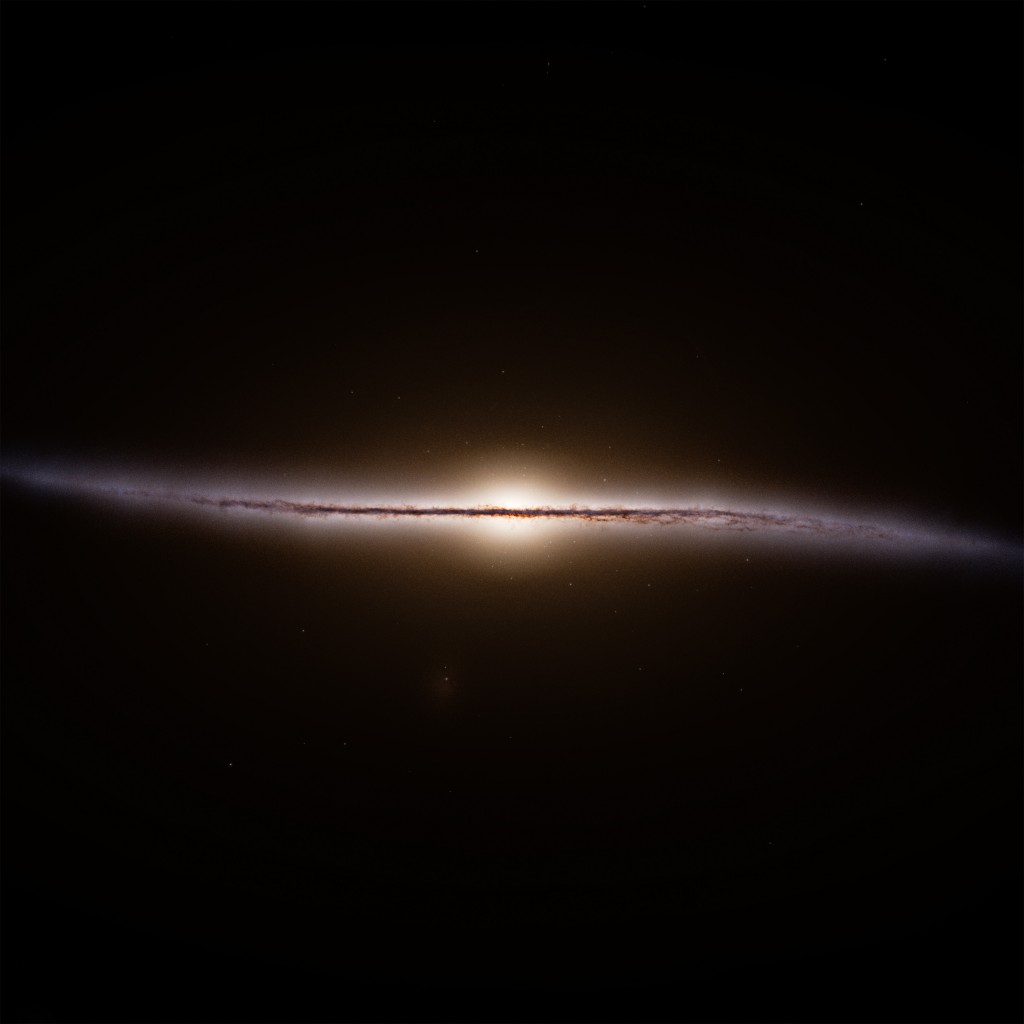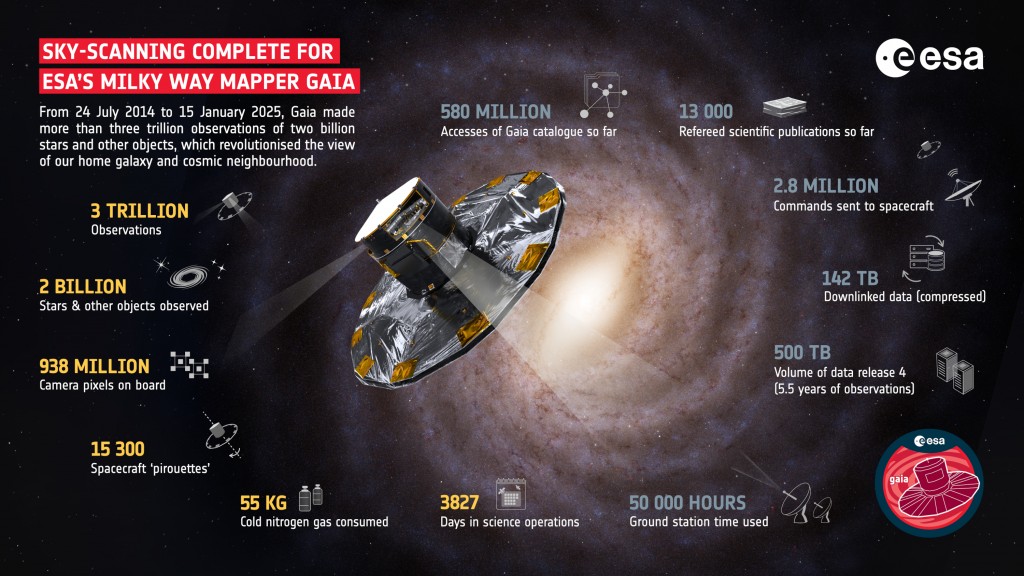The Gaia spacecraft is ending its life of observations, but the harvest continues
Over a period of 10 years and a half (which is 2 times the mission’s nominal duration), Gaia has provided more than a million of gigabytes of data for some 2 billion objects in the sky. At this stage, it has already had a significant impact on our knowledge of the structure, composition and dynamics of the Milky Way.

Artist impression of our galaxy, the Milky Way, based on data from ESA’s Gaia space telescope. Credit: ESA/Gaia/DPAC, Stefan Payne-Wardenaar – CC BY-SA 3.0 IGO or ESA Standard License.
The Gaia spacecraft will now definitively cease its scientific observations. However, this is far from being the end of its fabulous story. The Gaia mission continues with the analysis, interpretation and publication of the data.
As part of the Belgian Gaia effort funded by BELSPO, the Astronomy and Astrophysics Department of the Royal Observatory of Belgium has been contributing to the Gaia revolution from its effective start in 2005, with the creation of the Gaia data consortium (Gaia DPAC).
The next step will be the publication of the fourth version of the Gaia catalogue (Gaia DR4), scheduled for the end of 2026. The fifth and final catalogue (Gaia DR5) is expected to be released in 2030.
For more information, read the ESA press release: https://www.esa.int/Science_Exploration/Space_Science/Gaia/Last_starlight_for_ground-breaking_Gaia

